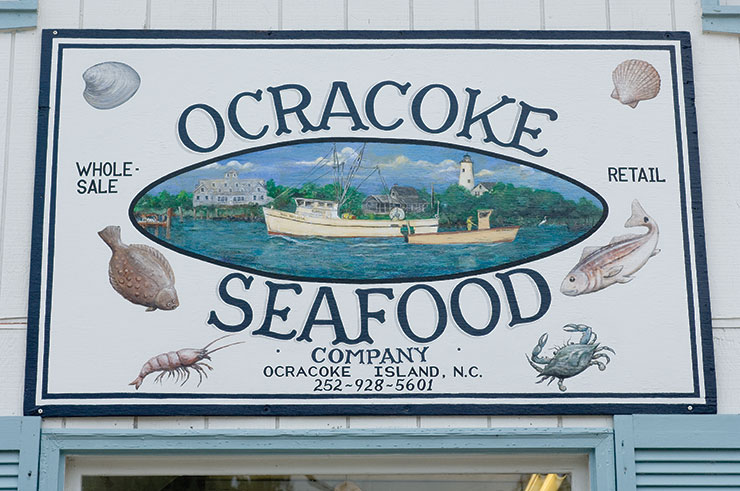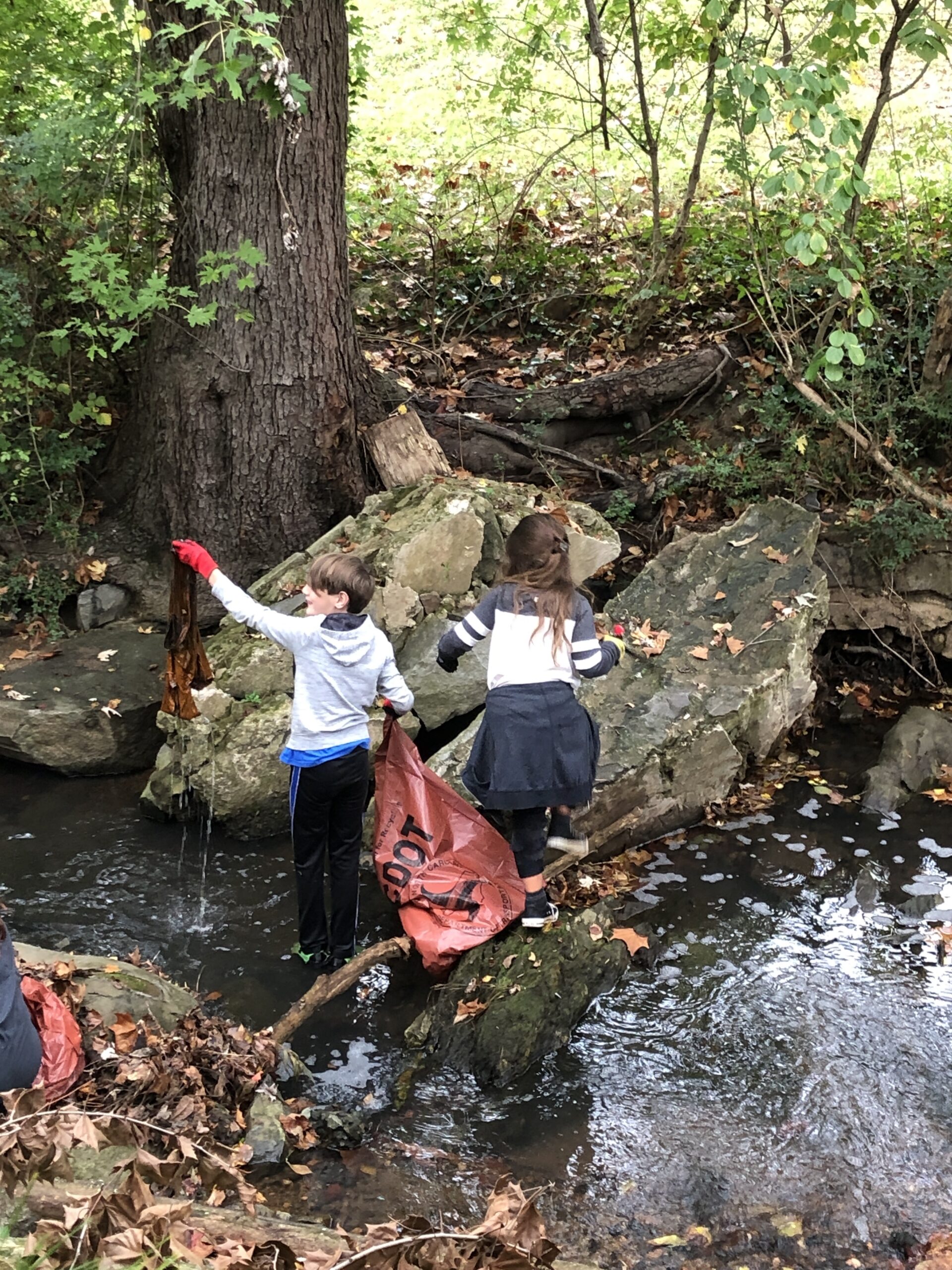Keeping Local Seafood Afloat: Workshop Explores Consumer Trends And Marketing Strategies

For many Americans, mealtimes just aren’t the same anymore.
From pet food to seafood, the recent scare over contaminated imports has people questioning the origins of what they, and even their four-legged friends, are eating. Just as products labeled “natural” or “organic” are growing in popularity along grocery store aisles, the demand is rising for products that are locally grown and harvested.
Such a trend could help North Carolina fishing communities stay afloat in a market saturated with cheaper Asian imports, says Barry Nash, a seafood technology specialist for North Carolina Sea Grant.
“Freshness is important to consumers, and natural is important to consumers — seafood fills both of these bills,” explains Nash, who studies trends in seafood consumption.
To compete with imports, fishers and seafood dealers need a more consumer-focused approach to marketing their catch, Nash says. Today’s customers looking to buy local are often health-conscious, time-starved and willing to pay extra for convenience and premium products.
“With a little focus on consumers, and a little advertising to what they want, we can move seafood commodities pretty easily.”
But shifting from traditional volume-based production to a more consumer-centric, value-added approach can be daunting for many fishers and seafood dealers, says Scott Baker, fisheries specialist for North Carolina Sea Grant. Many don’t know where to begin.
MORE VALUE, FEWER FISH
To help fishers and dealers explore their options, Baker organized the first North Carolina Seafood Marketing Workshop, held in January in Wilmington. Similar workshops are planned for 2009.
“For people whose business is going well, this workshop provides more tools for their toolbox,” Baker says. “For those looking to diversify their business, the workshop is an introduction to different methods and strategies that can help them grow their business.”

The workshop was organized by North Carolina Sea Grant and sponsored by a grant from the Southern Region Risk Management Education Center, part of the U.S. Department of Agriculture’s Cooperative State Research, Education and Extension Service.
More than 30 fishers, seafood dealers and related businesses attended. Many, such as Tom Burgess, a black sea bass fisherman, already see that their future involves catering to consumers.
“Right now it is to my advantage to focus on production,” he explains, noting he brings in 400 to 500 pounds per trip. It is too much for him to sell himself, especially when seafood dealers have more resources to move products quickly.
But Burgess is worried about future reductions in total allowable catch (TAC) regulations in the snapper/grouper fishery.
“If it goes down from 50,000 pounds of total allowable catch to 25,000 pounds, you’d better start thinking about how you’re going to make up that dollar difference,” he says.
Burgess says he attended the workshop to explore direct marketing for a high-end, mailorder fillet service. Right now it is just an idea, but planning for the future can’t hurt.
FISH FULLY HEALTHY
Despite increasing regulations on catch and the stream of imports, the good news for fishers and dealers is that Americans want to eat seafood, and eat a lot of it.
Last year, consumers purchased $22.7 billion worth of seafood to prepare at home, and they spent an additional $46.6 billion on seafood at restaurants, according to statistics from the National Fisheries Institute presented at the 2007 Atlantic Fisheries Technology Conference.
Nash says aging baby boomers are on the leading edge of the seafood consumption trend as they try to adopt healthier lifestyles. Seafood is high in protein, low in fat and full of heart-healthy Omega 3 oils, which some research links to reduced memory loss in older adults.

Six in 10 adults are interested in learning more about healthy foods that could reduce the risk of disease, according to a report by Elizabeth Sloan appearing in Food Technology, a periodical for the Institute of Food Sciences.
“People are getting older and becoming more aware of their own mortality,” Nash explains. “They want to do what they can to stay healthy in their golden years.”
Seafood is among the most frequently served main dishes in restaurants, and sales of seafood at schools, universities, hospitals and nursing homes are steadily rising, according to Sloan’s research.
Such statistics indicate that the most opportunity is in the food service sector, Nash says. To get their products into restaurants, fishers and seafood dealers should develop good relationships with local chefs.
“If you go to independent restaurants where they can change their menus, you’ve got a better chance of getting your seafood products in the door,” says Susan Andreatta, an anthropologist at the University of North Carolina at Greensboro.
Andreatta studies consumer expectations about seafood, and what that means for creating new markets in North Carolina. Her work is supported by an N.C. Fishery Resource Grant, which is funded by the N.C. General Assembly and administered by North Carolina Sea Grant. Local restaurants are where chefs are looking for freshness and distinctive flavor, she says.
“It’s not the chain restaurants, where the taste has to be the same everywhere.”
CHEF’S CHOICE
Nash predicts freshness will be the most important restaurant trend during the next decade.
“All chefs like to work with fresh local products,” says Libby Eaton, co-owner of Bistro-By-The-Sea in Morehead City. Her husband, Tim Coyne, is the other owner and head chef. Many chefs are trained to use local ingredients, as customers prefer, she says.

Eaton and Nash recommend fishers and dealers meet chefs’ expectations about product quality, appearance and service.
Shrimp is a top seller at seafood restaurants, and chefs want shrimp sorted into consistent sizes and appearance, Nash explains. Crabmeat, popular in many main dishes, should be free of excess cartilage or egg particulates, he says.
Eaton and Coyne order their shrimp through Pamlico Packing Company in Pamlico County because the restaurant doesn’t have the resources to devein and clean them. They also order fresh crabmeat from the company when it is in season.
Freshness and convenience are just as important when it comes to finfish, Eaton adds. Chefs prefer products be delivered directly to the restaurant, prepared and ready to go.
“Usually chefs want their products already filleted,” she says.
Larger finfish should be headed, gutted, scaled and filleted, according to Nash’s research. Fish weighing less than 20 pounds can be “head-on,” but should still be gutted.
“If the local dealers won’t provide restaurants with what they want, they will find someone who will — likely a national provider,” he says.
FAST, FRESH AND EASY
The same principles of quality and convenience also apply to individual consumers buying directly from local fishermen and seafood businesses, Andreatta notes.
“Families are getting smaller, and people are more likely to buy the amount of seafood they need for a meal,” she says. “They’re not likely to buy pounds and pounds of shrimp, head them and put them in the freezer for later.”
Sloan found that several of American’s top timesaving activities involved food, including bringing home take-out meals and eating frozen or pre-prepared meals. Nearly 80 percent of consumers in Sloan’s research said that the most enjoyable part of cooking is serving the meal.
‘That says that people don’t want to spend the time cooking their own food,” Nash explains. “People want things that are easy to prepare because they are time-starved.”
Theresa Teed, a workshop participant, knows first-hand that consumers are looking for seafood that is fresh, fast and easy. She and her husband Lee own and operate Crabby Oddwaters, a restaurant and bar in Sunset Beach. They also own Bill’s Seafood, a fish market next door. Last summer, the couple experimented with selling “take and bakes” — fresh fish or shellfish that are boxed daily and comes with all the necessary breading and sauces to quickly prepare a full entree.

Teed says the “take and bakes” were popular with vacationers and residents, and Crabby Oddwaters plans to offer them again this summer.
“People can put them in their own ovens when they want to,” she says, explaining the product’s success. Not so with traditional to go boxes, where cooked food gets mushy after a short period of time, she adds. “In some cases, you can even fool your friends into thinking that you cooked all day!”
Even though consumers are looking for fast meals, their preference for fresh, local seafood is evident in their willingness to pay for it, Andreatta discovered. In her consumer preferences study, she found that most people would choose a slightly more expensive plate of local shrimp for $21 versus a plate of imported shrimp for $18.
The anthropologist interviewed 295 consumers in Carteret County from May through October 2006. Her sample included vacationers, longtime residents and new residents.
Eighty-two percent said it was important that the seafood they bought in their communities be local. Their main reasons for supporting local seafood were to help the local economy and fishing families.
Despite the desire to buy local, Andreatta found that consumer knowledge about seafood is lacking. Many were not aware about the seasonally of seafood, or could not consistently identify fish species.
Eaton says that trend is similar among some restaurant patrons.
“I think Americans are used to getting anything they want all year long,” she says of seafood. “They don’t realize they’re eating imports or frozen food.”
That gap in consumer desire and knowledge is where marketing can play a role, Baker says.
“You can’t expect the people who buy seafood to have more information than you do,” he told workshop participants.
“It is always better to give consumers more information than less.”
To help jumpstart consumer knowledge about seafood, many local fishing economies are turning to community-wide, grass roots cooperative efforts. The concept of community-supported fisheries (CSF) is growing more popular, as are marketing campaigns to highlight a region’s seafood.
CSF initiatives stem from the concept of community-supported agriculture, Andreatta explains. Arrangements are based on an agreement among a fisher, a seafood vendor and a customer. The customer pays up front during the off-season and is guaranteed a supply of fresh seafood throughout the fishing season. The arrangement supports local fishers, and consumers know the origin of their food.

Successful CSFs exist in Maine, and Andreatta hopes to start some in North Carolina as part of her Fishery Resource Grant. Several of North Carolina’s fishing communities already are finding ways to market their local flavors.
On Ocracoke Island, south of Hatteras, local fishermen formed the Ocracoke Working Watermen’s Association (OWWA), a community based non-profit, and purchased the last remaining fish house on the island.
Members now sell their daily catch from the space under the Ocracoke Seafood Company, a retail and wholesale business owned and managed by OWWA.
In Carteret County, a direct marketing campaign touts the region’s seafood. The brand Carteret Catch,™ guarantees that consumers get seafood direct from the source — Carteret fishers. Members include commercial fishers, seafood dealers and retailers and restaurants.
Since it began in 2006, Carteret Catch has gained prominence and recognition among restaurants and consumers. Part of its success is due to the careful creation of a brand identity, Nash says. The name and logo were chosen to convey the image of fresh, high quality seafood direct from local waters to consumers, he explains. The logo features the silhouette of a local fishing vessel.
On a state level, North Carolina promotes local seafood through the “Freshness From North Carolina Waters” marketing program, a sister to the N.C. Department of Agriculture and Consumer Services’ (NCDACS) “Goodness Grows in North Carolina” program that focuses on agriculture. “Freshness From North Carolina Waters” provides numerous resources to help local fishers and seafood businesses, says program director William Small.
“The NCDACS has marketing specialists you can work with to grow your business,” Small adds.
” ‘Freshness from NC Waters’ advertises in trade publications, visitor publications, and billboards across the state.”
A few years ago, the NCDA sponsored a marketing campaign promoting the merits of wild-caught shrimp. Trucks and billboards across coastal counties featured a kebob with succulent grilled shrimp and a tagline that implored, “Go Wild with North Carolina Shrimp.”
Denny McCuiston, a lifelong Wrightsville Beach shrimper and workshop attendee, says that since the “Go Wild” campaign, more people ask if his product is locally caught.
“The wild caught shrimp advertising has helped tremendously in making the public aware of what they’re eating,” he says. “I hope people will keep asking for local shrimp, and I hope the ad campaign continues because people tend to forget about things unless they’re reminded.”
For those at the N.C. Seafood Workshop, the take-away messages were clear — the demand for fresh, local seafood is growing, but to survive amidst competitively priced imports, one must understand consumer preferences and strategically market products.
A consistent message about a product that target people’s preferences can change consumer behavior, Andreatta says. “In this case, we want people to look for and buy local.”
This article was published in the Early Summer 2008 issue of Coastwatch.
For contact information and reprint requests, visit ncseagrant.ncsu.edu/coastwatch/contact/.


